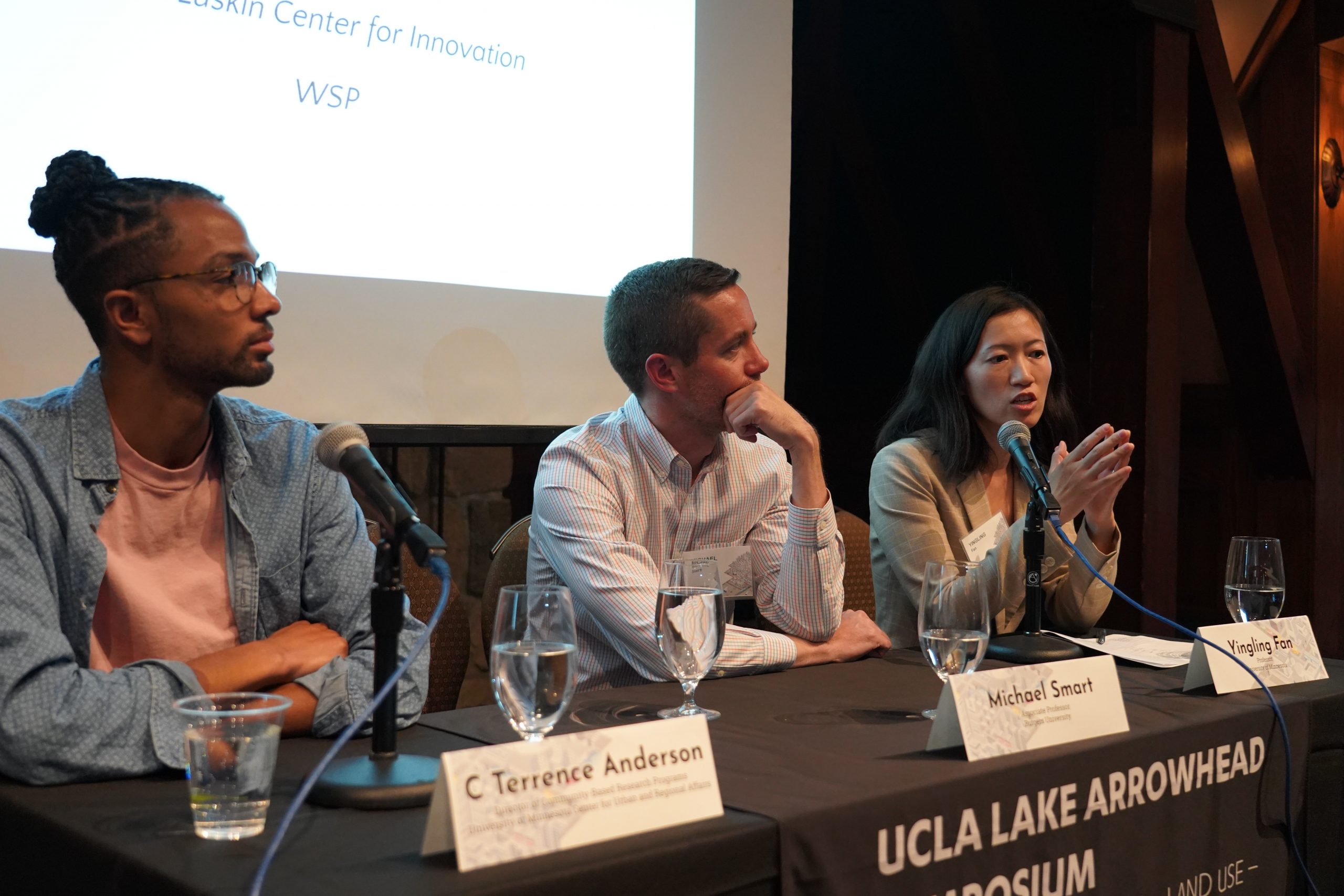Transportation as a Means for Opportunity
More than 180 transportation policymakers, planners, and advocates gathered Oct. 20-22 for the 29th annual UCLA Lake Arrowhead Symposium — Routes to Opportunity: Connecting Transportation and Equity. This year’s event examined how transportation and land use approaches can advance policies and programs that center social equity and improve access to opportunity for people and communities.
The event kicked off with a discussion on the relationships between transportation and employment opportunities, especially how these relationships vary by mode, race, class, and location.
The session was moderated by Evelyn Blumenberg, director of the UCLA Lewis Center for Regional Policy Studies and professor of urban planning at the UCLA Luskin School of Public Affairs, and included presentations by C Terrence Anderson, director of community-based research programs at the University of Minnesota Center for Urban and Regional Affairs; Michael Smart, associate professor from Rutgers University; and Yingling Fan, professor at the University of Minnesota.
Advancing regional equity through transportation development & community organizing
Anderson spoke about how the Twin Cities area has received positive press attention for expanding its transit and eliminating single-family zoning, but that is not the whole story. The region is becoming increasingly unaffordable. In 2014, there was no neighborhood where a black resident with a median income of $14,951 could afford rent.
As governments and transit agencies work to invest in these neighborhoods, Anderson said it’s key to acknowledge the role of transit investment in displacement and gentrification. He also discussed the need to change the narrative: Often, the problem is defined as concentrated poverty instead of concentrated areas of wealth in suburbs.
Community organizing should also be at the center of transit decision-making. The use of a racial equity framework will ensure solutions are contextualized, community-centered and commensurate with what caused the inequities, he said.
Automobility and access to opportunity
Rutgers professor Smart highlighted the economic mobility associated with access to automobiles. Having a car provides access to jobs, reliability to get to work on time and keep that job, and the ability to search for better-paying employment. Some studies have shown that a car confers about $10,000 more in yearly earnings.
Carlessness and poverty are increasingly linked, Smart said. Even when poor families get a car, many will lose it within two years. According to his research, Smart found that after losing a car 74 percent of people worked fewer hours or stopped working altogether, 81 percent went to the doctor less, and 82 percent of parents took their children to fewer places.
Is it possible to provide low-income families with cars while reducing car usage among wealthy families?
How transit investments can advance transit equity
University of Minnesota professor Fan said a key incentive to decrease personal vehicle use is a high-quality transit system. “It’s wrong to plan public transit only for those who need it,” she said. Everything from environmental impacts to quality commute time can be motivators but will need a transit system to support it.
Fan closed out the session with an analysis of how transit agencies can change mobility inequities in the future. Currently, low-income and minority households tend to have fewer transportation options and, thus, less access to opportunities. She explored how changes in investments and transit services can improve potential access to opportunities, especially for disadvantaged communities.
“Mass transit needs to be mass to be successful,” said Fan, referring to a robust system that includes multimodal options, bus-rail integrations, and supportive land-use policies.
Related Content
For more information about the sessions at the Lake Arrowhead Symposium, check out our other recaps here.

